It sneaked up on us, cheeky rascal. We had only just come back from the field. Tired and hungry, we didn’t even have enough time to bring food tins to the table, which temporarily stood outside. We came out from behind the corner and there it was, the king of Svalbard himself, a mere few dozen meters away! And although this one looked really friendly, we must not forget that even a nice bear is still the world’s largest land predator, which is best admired from a little further off.
Luckily, our guest was up to no evil. It only sniffed at us keenly and steadily, while we gazed at it in much the same manner. It was magnificent. And even though we would have gladly stared at it a lot longer, after a few minutes off went signal flares. This, as you may expect, spoiled the mood, because few animals enjoy loud noises, bright flashes and the smell of sulphur. So why did we do it? Because polar bears must learn to associate humans with absolutely nothing good. Only then will they keep their distance. And distance means safety, for us and for them.
The king of Svalbard himself, a mere few dozen meters away.
© Barbara Jóźwiak, forScience Foundation
Due to the presence and inherent inquisitiveness of polar bears, an important element of our fieldwork is keeping the team safe. What’s key here, of course, is the knowledge of local conditions and common sense, but let’s be honest – when confronted with 500 kilograms of a curious bear, you may want to have something a bit more tangible up your sleeve. Like barriers, gratings, chains and bolts, which make the inside of the Awfully Rotten Cabin a place of relative safety.
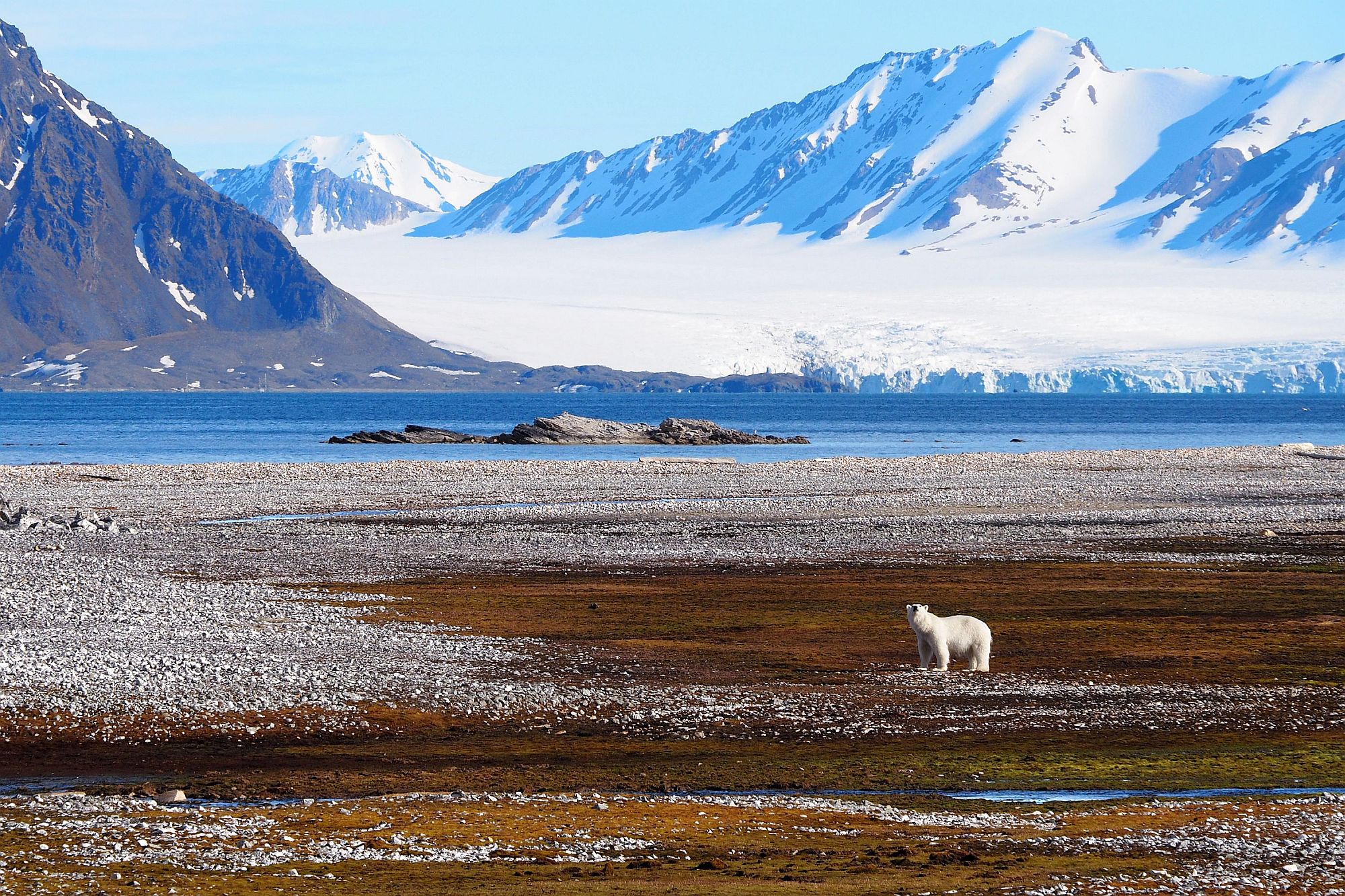
© Barbara Jóźwiak, forScience Foundation
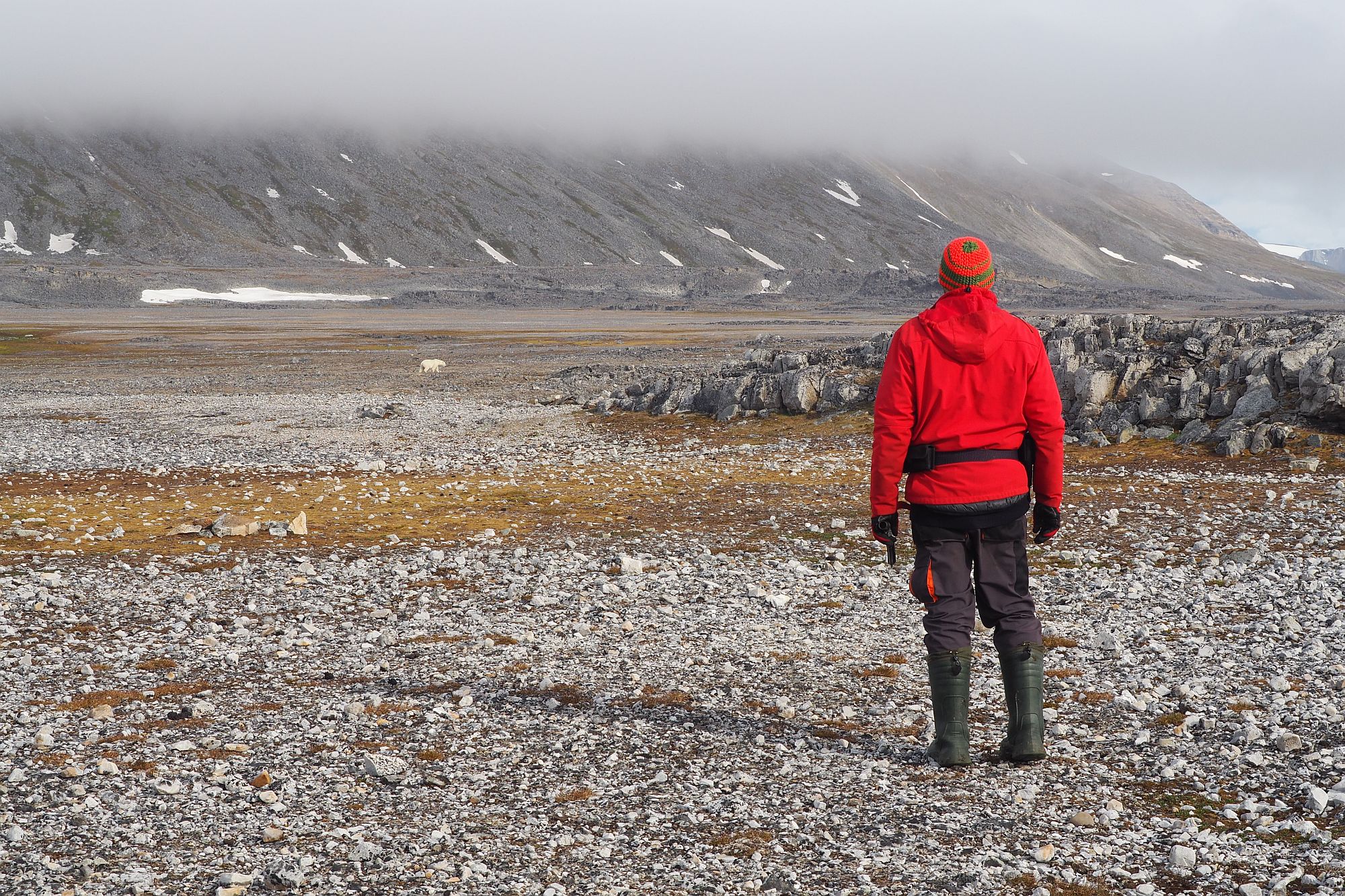
© Barbara Jóźwiak, forScience Foundation
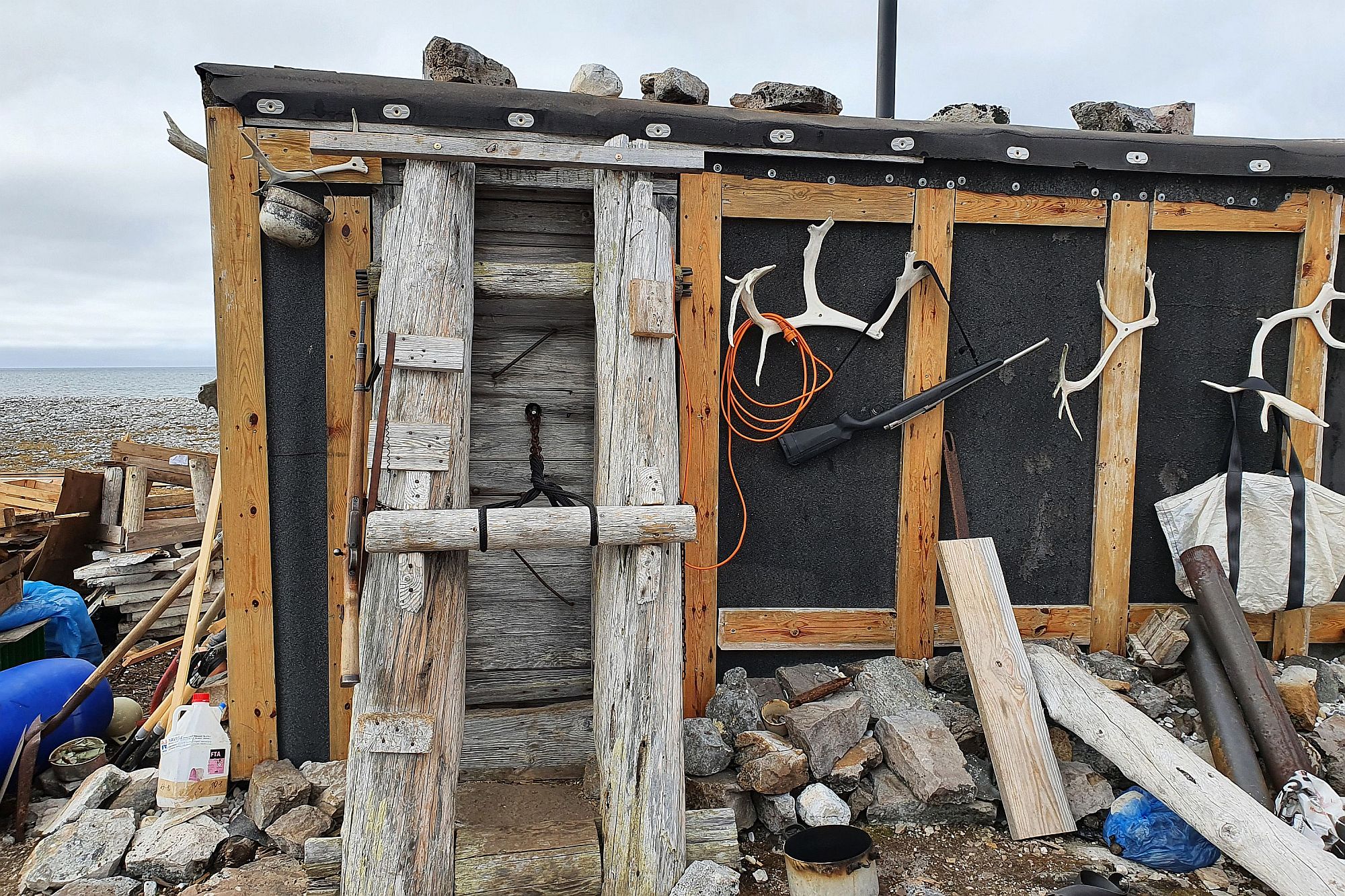
© Krzysiek Pełka, forScience Foundation

© Barbara Jóźwiak, forScience Foundation
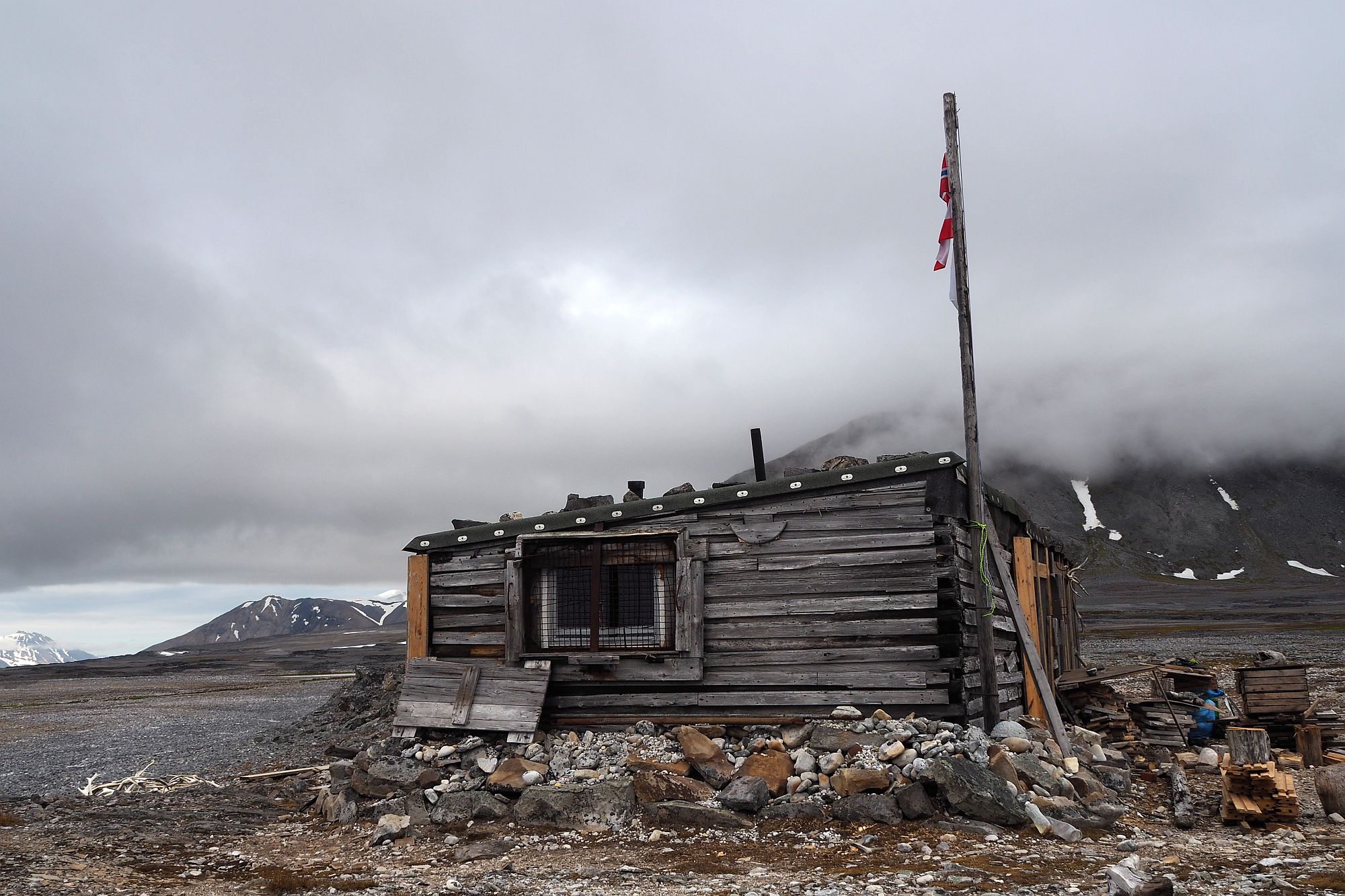
© Barbara Jóźwiak, forScience Foundation
If you’re intrigued by bear prevention methods inherent in construction trends popular among Svalbard’s trappers, do check out our article on this very topic. It may not be new, but it’s just as relevant as ever.
Barred windows and bolted doors are one thing, but what if you bump into a bear out in the open? What if it’s looking for trouble or a bite to eat? An aggressive bear is no joke and although we have never met one – and sure hope we never will – it seems like a good idea to be prepared for the worst. This is why, before leaving for Svalbard, each expedition member without exception had to complete a training in the safe handling and use of firearms.
Before you let your imagination run riot, however, let us make it very clear that polar bears, although potentially dangerous, are not bloodthirsty monsters, and Sørkappland, wild though it is, is not quite the Wild West. Even though without a gun you shouldn’t even go out for a pee, spontaneous shooting sprees – especially involving polar bears – are a resounding no-no. Tough guys, be warned. Before you do anything stupid, do look through relevant regulations. An unjustified killing of a bear is severely punished in Svalbard.
According to the rules applicable in Svalbard, in justified cases shooting practice may be conducted outside a shooting range.
© Adam Nawrot, Fundacja forScience
But hold on a second. Is it okay in Svalbard to practice shooting wherever you please? Of course not, but in justified cases it is allowed to do so outside a shooting range. How do we now? We asked at the Governor’s Office. There is, however one key condition: safety. No person, animal or element of cultural heritage must be harmed or even put at risk in the process. And in our case, none was. The only victim was a broken piece of wood selected to serve as a target.
Polar bears, pee breaks and the Wild West bring us smoothly to a small, but picturesque rock cliff near the Awfully Rotten Cabin, which would definitely not look out of place in a western. And so it’s no wonder that a sheltered nook in the cliff became the backdrop for the good, the bad and the ugly. Or, to put it more simply, was adopted as the expedition toilet shelter.
Two years before, in a sudden burst of enthusiasm, we built a wooden toilet shelter with a gorgeous view across the fiord. It was great, but not for long, as the storm that hit Palffyodden a few days after the grand opening gave the poor thing such a pounding that we didn’t even try to repair it. Instead, we moved our bucket (yep, that’s all there is for a toilet in Palffyodden) to a nook in the rock a little closer to the cabin. And there it stayed. Rock walls provide a much better protection from the wind than the wooden ones ever did, and – as a bonus – give a 100% guarantee that no one (including a bear) will steal up on you from behind. Total privacy, however, was not to be expected, because the neighbouring nook soon turned out to be home to a snow bunting family, which regarded our daily doings with obvious fascination.
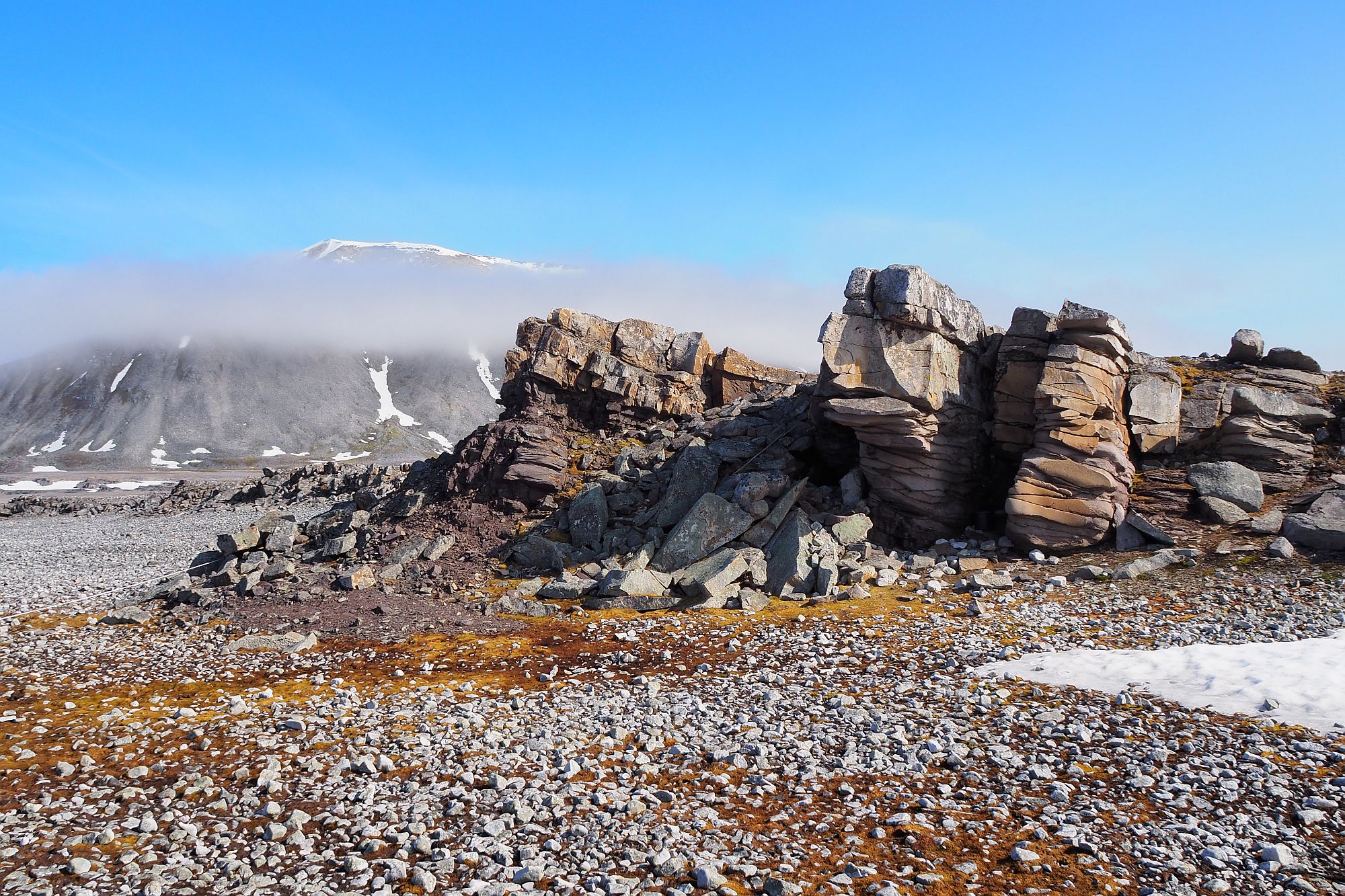
© Barbara Jóźwiak, forScience Foundation
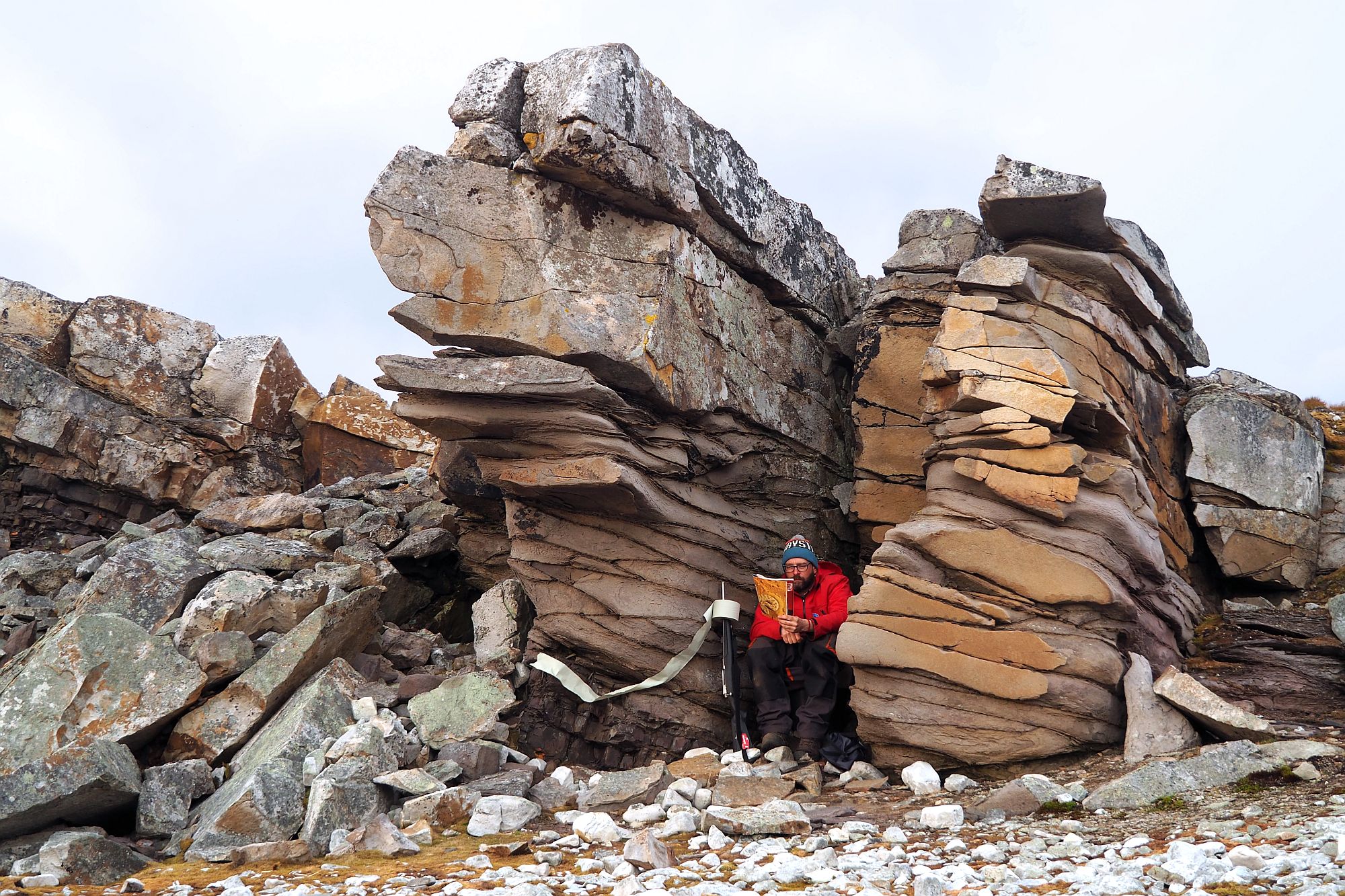
© Barbara Jóźwiak, forScience Foundation
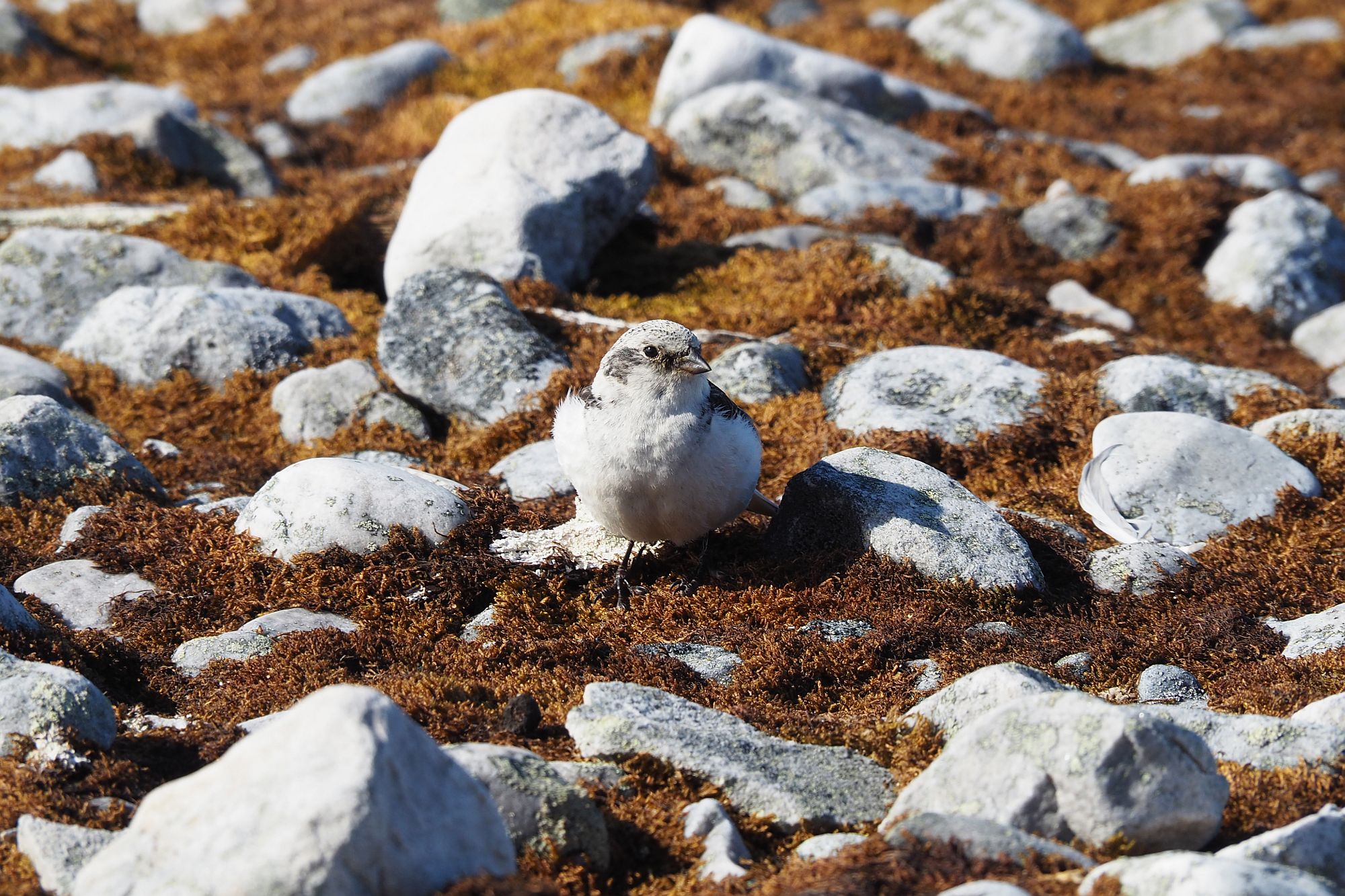
© Barbara Jóźwiak, forScience Foundation
Snow buntings, however, are just a single entry on a long list of feathered residents of Svalbard that kept us regular company. Just as common were kittiwakes, which happen to nest in a large colony a few hundred metres from the Awfully Rotten Cabin. As a result, groups of them non-stop went back and forth between their nests and the sea (which is the birds’ version of the human commute between the couch and the fridge), providing important… weather information. And because their route runs right outside the cabin’s window, collecting the information does not take too much effort. Kittiwakes beating their wings without moving forward are generally not a good sign, those flying backwards are even worse, and no airborne kittiwakes are a local equivalent of an emergency weather alert warning against gale force winds. The kittiwakes of Palffyodden, however, serve not only a practical function, but are also a source of entertainment, as standing in front of an approaching bird squadron has a distinct Star Wars-like feel to it! The birds’ fierce battles with Arctic skuas are quite a show too, but that’s a topic for another story.
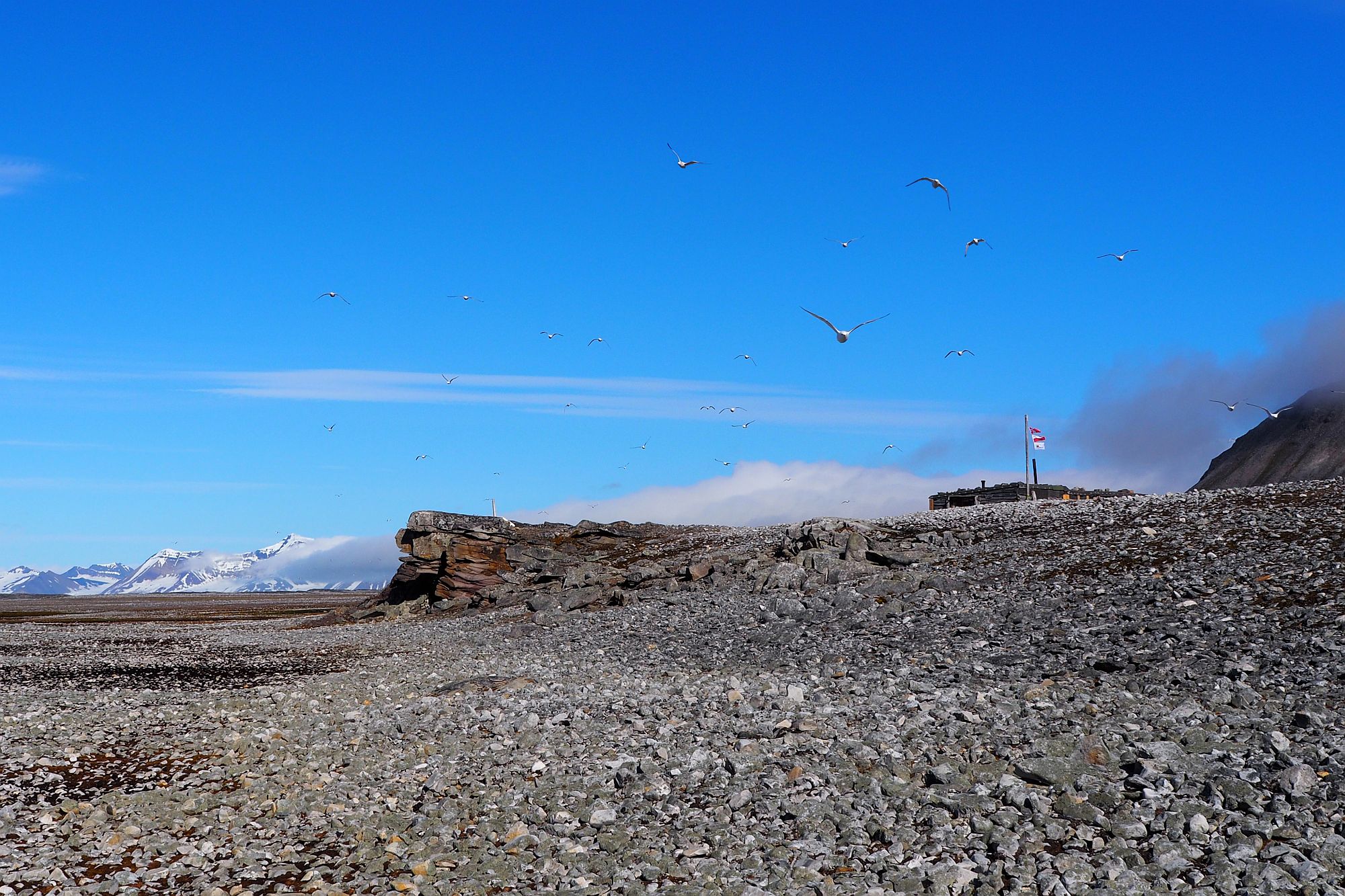
Standing in front of an approaching bird squadron has a distinct Star Wars-like feel to it.
© Barbara Jóźwiak, forScience Foundation
The multitude of birds were a treat not just for the forScience team, but also for the Arctic fox, whose summer menu features mainly eggs and chicks. Our backyard specimen was greeted with much enthusiasm until one day it decided to clarify who’s in whose backyard after all and… thoroughly marked the area, including a large stack of firewood, which we’d chopped up earlier that day. And while the smell of fox pee is perfectly bearable out in the open, the warmth of the Awfully Rotten Cabin gave it such potency that the immediate elimination of contaminated pieces soon became a matter of life and death. The firewood incident made a lasting impact on the way expedition goods were stored around the cabin and earned the culprit a nickname. Śmierdziel (which is Polish for Stinker) could not care less about our resentment and kept popping in (and peeing around) while making regular rounds of its Arctic estate.
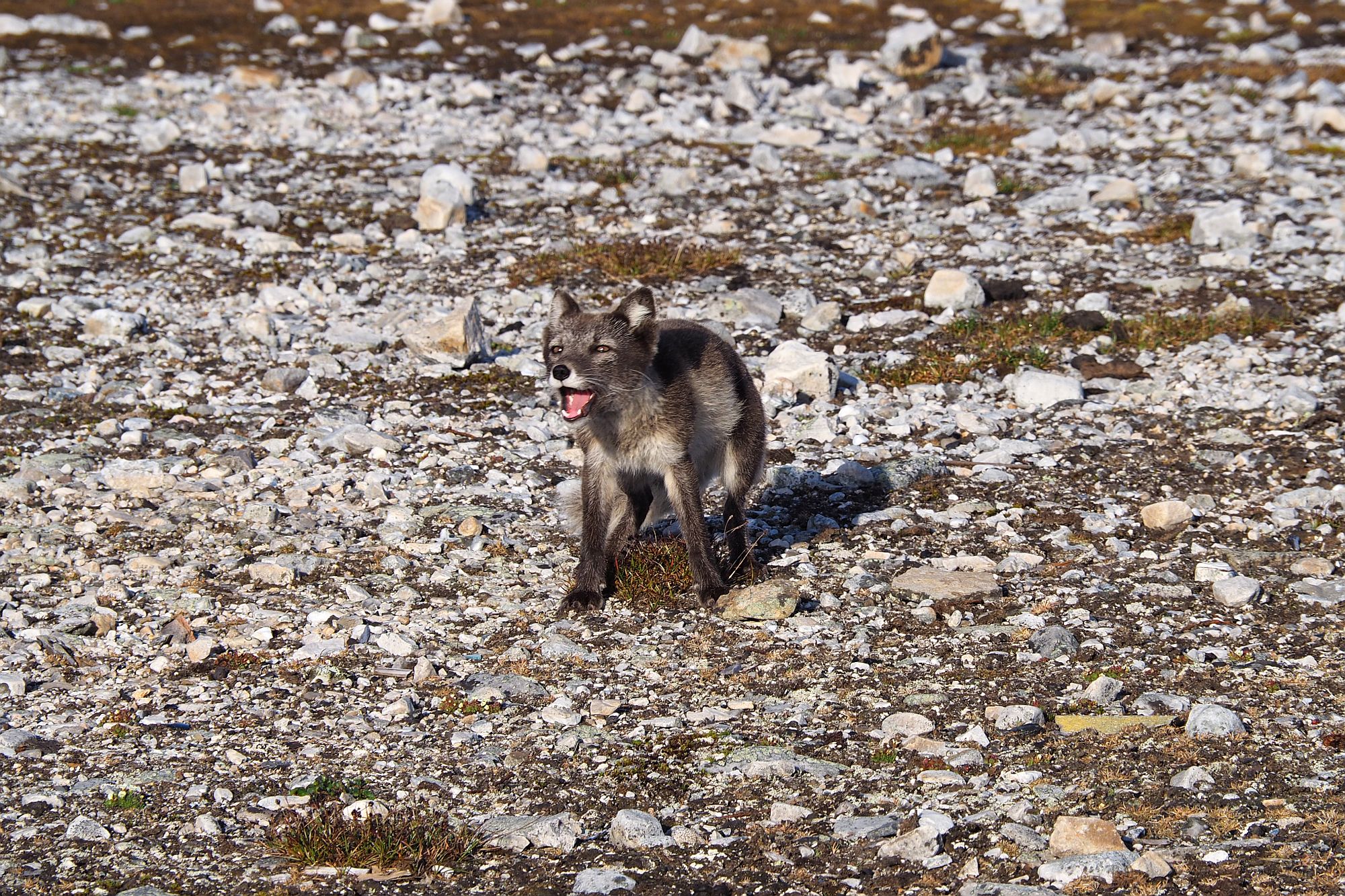
© Barbara Jóźwiak, Fundacja forScience
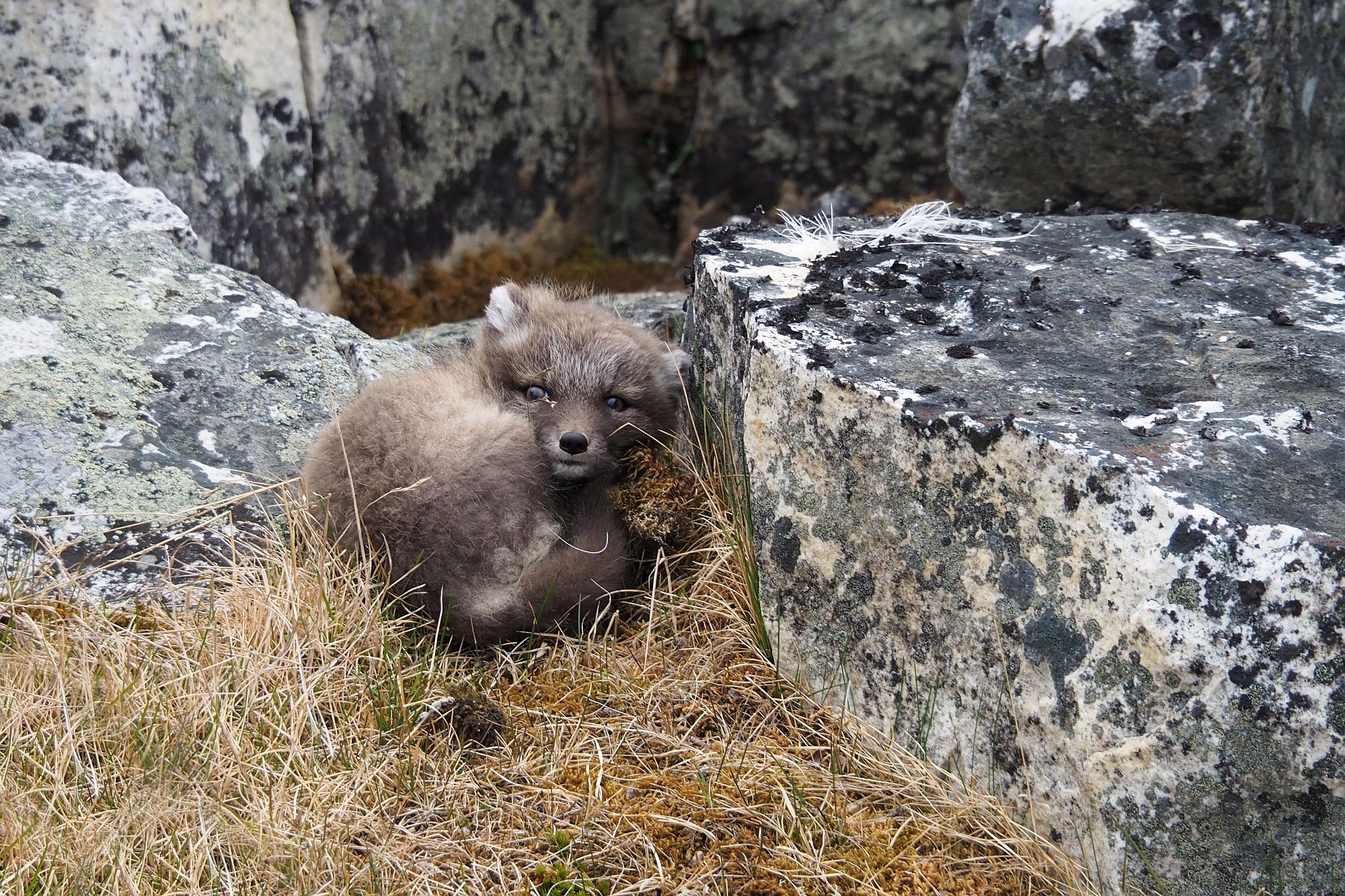
© Barbara Jóźwiak, forScience Foundation
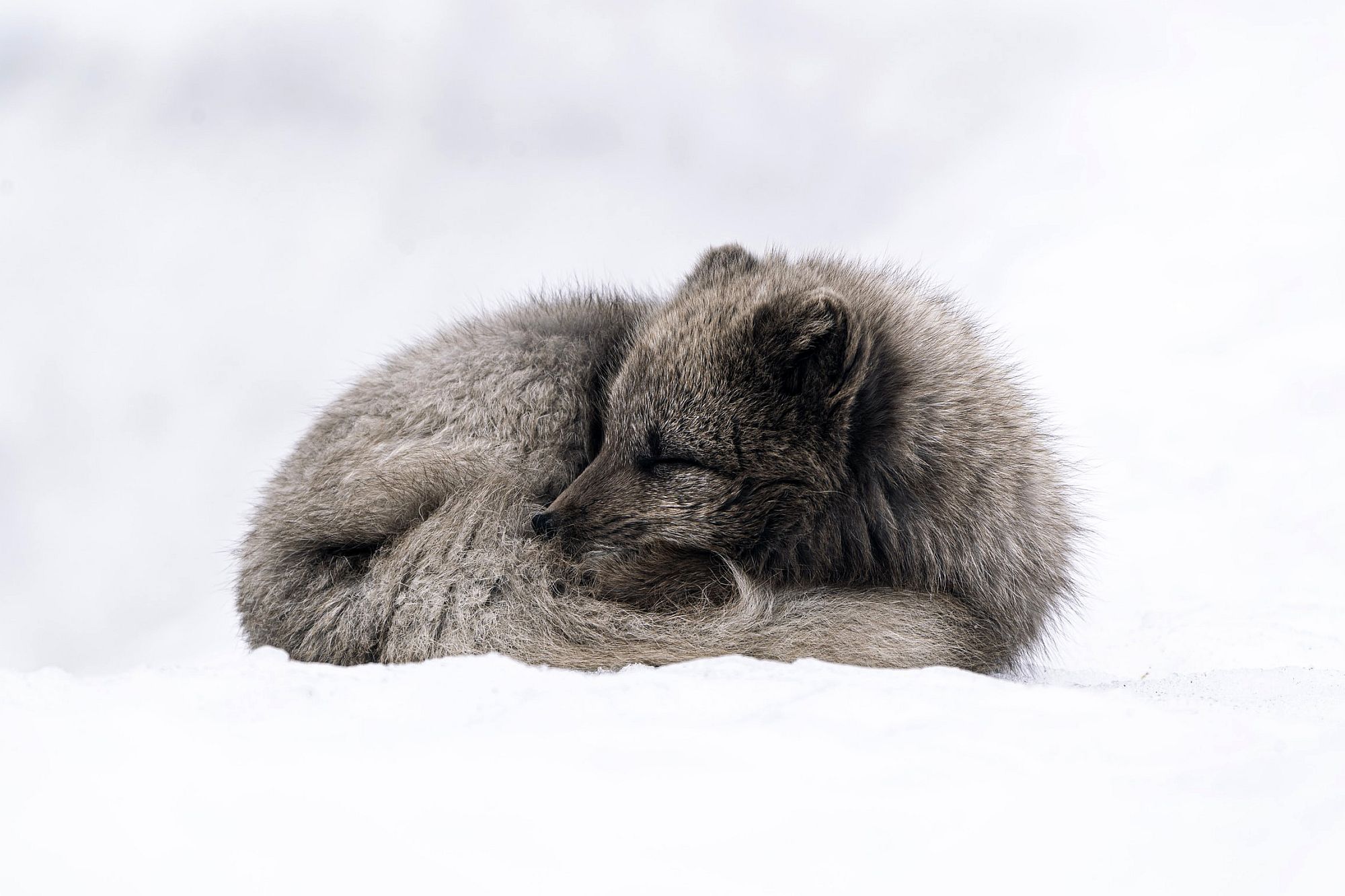
© Jonatan Pie
Apart from two polar bears, a family of snow buntings, a thousand kittiwakes and quite a few foxes, the forScience team had the pleasure to observe and be observed by a bunch of local fulmars, little auks, dunlins, barnacle geese, skuas, a few schools of beluga whales and countless reindeer. What we should probably add to the list are also a few apathetic flies, which found shelter inside the Awfully Rotten Cabin. We hope they all take care of the place during our absence and miss us just as much as we miss them.


